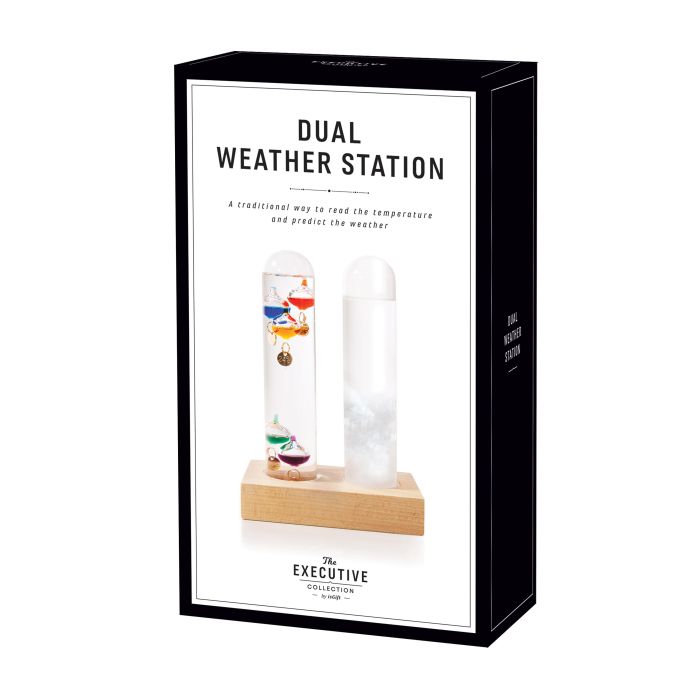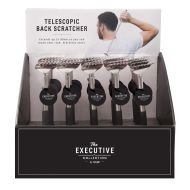The Executive Collection Dual Weather Station Clear 25.3x8x14.7cm
Dual Weather Station a traditional way to read the temperature and predict the weather. Two historical devices in one.
Assembled size: 17.5 x 14 x 7cm Storm glass.
Once used by seafarers to predict oncoming storms, the storm glass barometer came into general use in the early 1700s, and responds to atmospheric fluctuations to forecast the weather.
Admiral Robert Fitzroy conducted a detailed study of this instrument between 1834 and 1836.
He refined the chemical formulation and published observational guidelines on how to predict the weather, see instructions inside.
Galileo Thermometer In 1593, Galileo Galilei discovered that the density of liquids reacts predictably to changes in temperature.
He invented a device that allowed temperature variations to be measured.
HOW IT WORKS The sealed glass cylinder contains five floating glass bulbs. Each bulb has a calibrated, weighted metal tag. The temperature is determined by the lowest floating bulb.
When there is a bulb in the middle, the temperature should be read as between this degree and the lowest floating bulb. Temperature range: 16-32⁰C.
STORM GLASS SAFETY DIRECTIONS.
Do not subject to direct sunlight or place near to any heating or cooling vents.
Keep out of reach of children. Read safety directions. Contains Camphor. Flammable.
First Aid: For Advice, contact a Poisons Information Centre (E.g. phone Australia 13 11 26; New Zealand 0900764766) or a doctor at once.
Urgent hospital treatment is likely to be needed. If swallowed, do NOT induce vomiting. PLEASE NOTE: LIQUID MAY DAMAGE SURFACES
 Open Orders
Open Orders
 Invoices
Invoices
 FAQs
FAQs
 Catalogues
Catalogues
 Claim
Claim
 Enquiries
Enquiries




